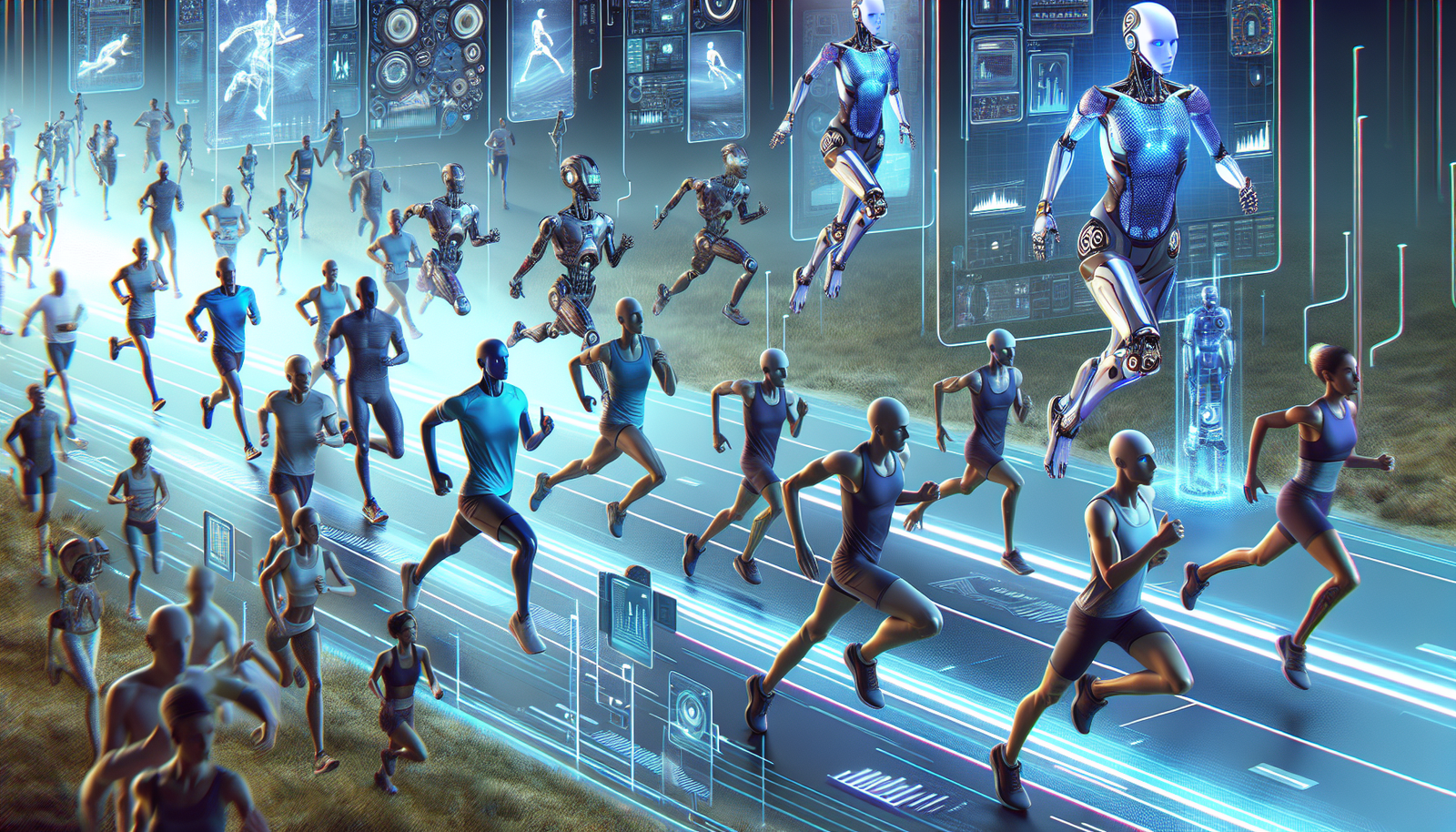The advances in robotics fascinate as much as they raise questions. The Beijing half-marathon reveals an unprecedented challenge: humanoid robots, designed to compete with human athletes, will take the starting line. Faced with machines programmed to run, the question arises: *could human performances be surpassed?* The competition, marked by the presence of models of *advanced technology*, raises technical and ethical issues. How will the robots absorb shocks, or manage obstacles on their 21 km course? This meeting between humans and machines promises to shed light on the future of sports and technology.
The technological challenges of the Beijing half-marathon
The Beijing half-marathon, scheduled for April 19, stands out with a fascinating competition between humans and humanoid robots. For the 12,000 eager runners, the confrontation with these machines raises many questions about the viability of robotic performances over a 21-kilometer course. This blend of men and technology presents a challenge for both participants and organizers.
The requirements for humanoid robots
The rules of the half-marathon specify that only humanoid robots can compete. These robots must stand on two legs, measure between 50 cm and 2 m in height, and operate either autonomously or via remote control. It is allowed to change batteries along the route, opening the door to innovative strategies to maximize performance during the race.
The most anticipated robots
Among the most notable candidates, the G1 from the company Unitree Robotics generates a lot of interest, as does TienKung, a product from a research institute based in Beijing. TienKung attracted attention by successfully completing the last 100 meters of the previous half-marathon, thus demonstrating its impressive capabilities.
The technical stakes
Having humanoid robots complete a half-marathon raises considerable technical challenges. The question of shock absorption during a race of such length remains central. Designers must also pay attention to the operational duration of the motors, without neglecting the robots’ response to obstacles on the course.
Expert analysis
Olivier Stasse, research director at CNRS and specialist in humanoid robotics, explains that such an event represents a true experimental laboratory. Advances in robotics and artificial intelligence compete here in a competitive setting, provoking reflections on the evolution of these technologies.
Impact on businesses and research
The media visibility generated by this competition proves beneficial for the companies, universities, and robotics clubs involved. Beyond simply demonstrating capability, the event inaugurates a new era of collaboration between the public and private sectors in robotics research. Recent developments, such as those related to swarm robots or skill acquisition, testify to spectacular advancements in this field.
Anticipation of performances
Experts also question the ability of robots to compete with human performances. Advances in reinforcement learning increase the likelihood that robots will improve their performance over time. This learning process raises vast possibilities regarding the future of competition between humans and machines.
Evolving framework of robotics
A platform such as an evolving encyclopedia on robotics allows for classifying robots according to their performances, thus providing an enriching overview of possible evolutions. The challenges within events like the Beijing half-marathon could reveal themselves as milestones in the history of robotics.
Common FAQs about the robots of the Beijing half-marathon
Can robots truly compete with human runners at the Beijing half-marathon?
Yes, the robots specifically designed for this event are capable of running, although they are not yet able to surpass human performances. Their design and algorithms are optimized for running, but human capabilities such as physical endurance remain major assets.
What are the main technical characteristics of the robots participating in the half-marathon?
Robots must stand on two feet and measure between 50 cm and 2 m in height. They can be remotely controlled or fully autonomous, and they can change their battery or even their robot during the race if necessary.
What technical challenges need to be overcome for robots to run 21 km?
The main challenges include shock absorption, motor lifespan, and the ability of robots to navigate and react to obstacles on the road.
How do robots manage changes in terrain during the race?
Robots are equipped with advanced sensors and computer systems that allow them to detect and assess obstacles, adjusting their speed or trajectory accordingly.
Are there any particularly anticipated robots for this edition of the half-marathon?
Yes, robots such as the G1 from Unitree Robotics and the TienKung from a research institute in Beijing are highly anticipated. TienKung had already demonstrated its capabilities by covering the last 100 meters of the previous half-marathon.
What is the impact of this competition on the development of robotic technologies?
This competition helps advance research and development in robotics by presenting technical challenges and encouraging innovation, which can have applications well beyond the race.
How are the performances of the robots evaluated during the race?
The performances of the robots are assessed based on their speed, their ability to finish the race without assistance, and their performance in varied racing conditions.
Will robots one day surpass human limits in other sports disciplines?
It’s a possibility, but it will depend on technological advancements and future research. For now, humans maintain the advantage in terms of physical endurance.
Can spectators interact with the robots during the race?
No, interactions with the robots are limited for safety reasons and to avoid disrupting their autonomous or semi-autonomous operation during the race.






